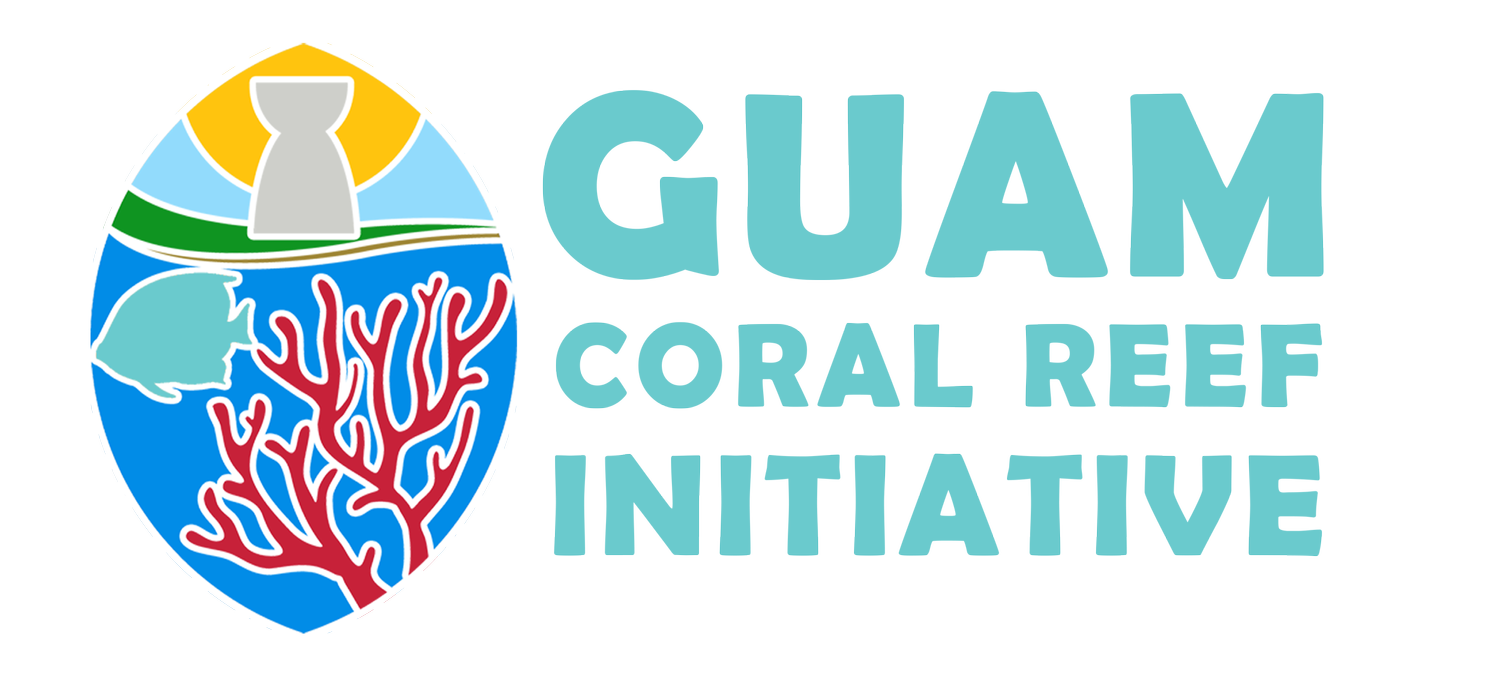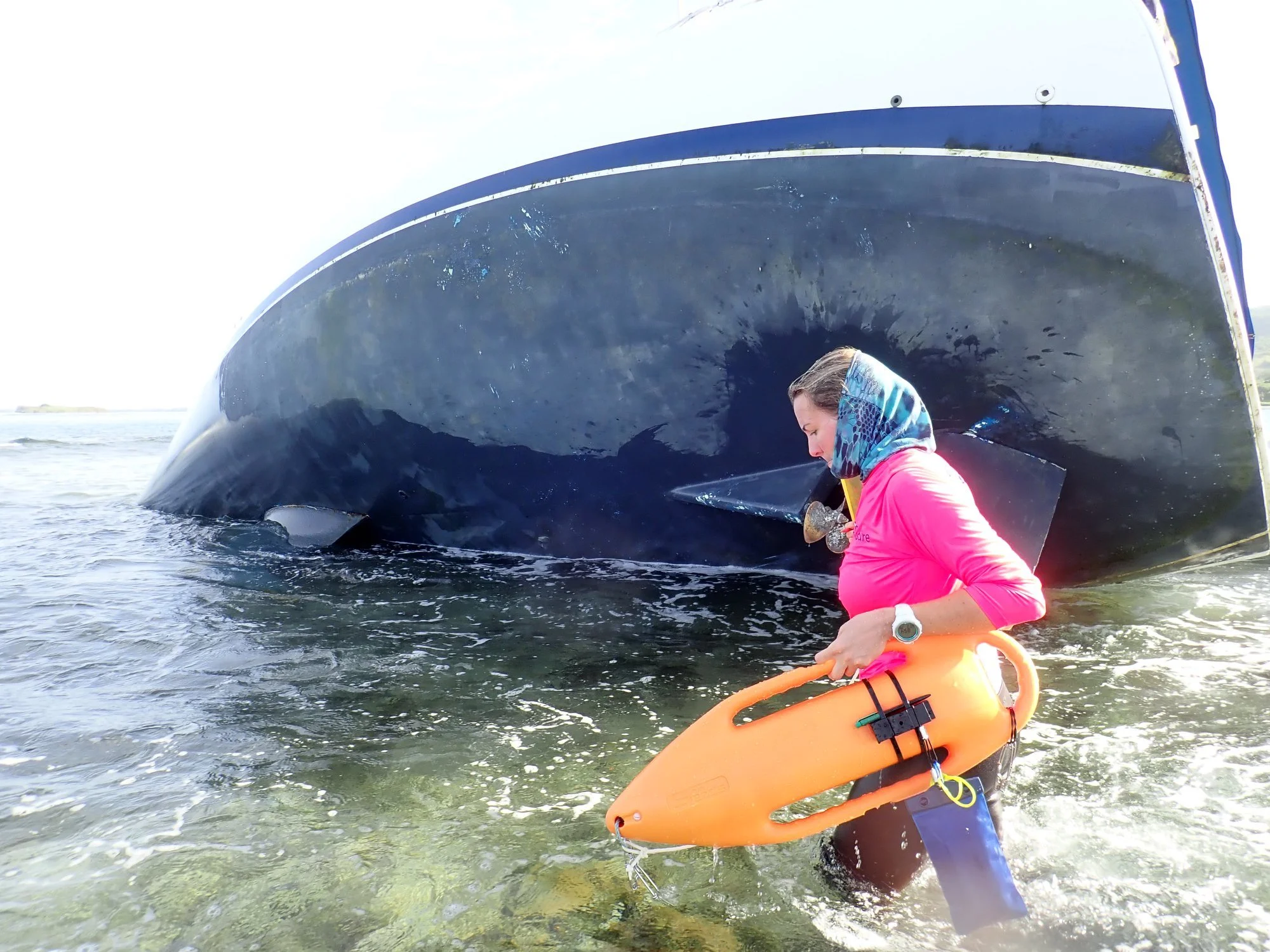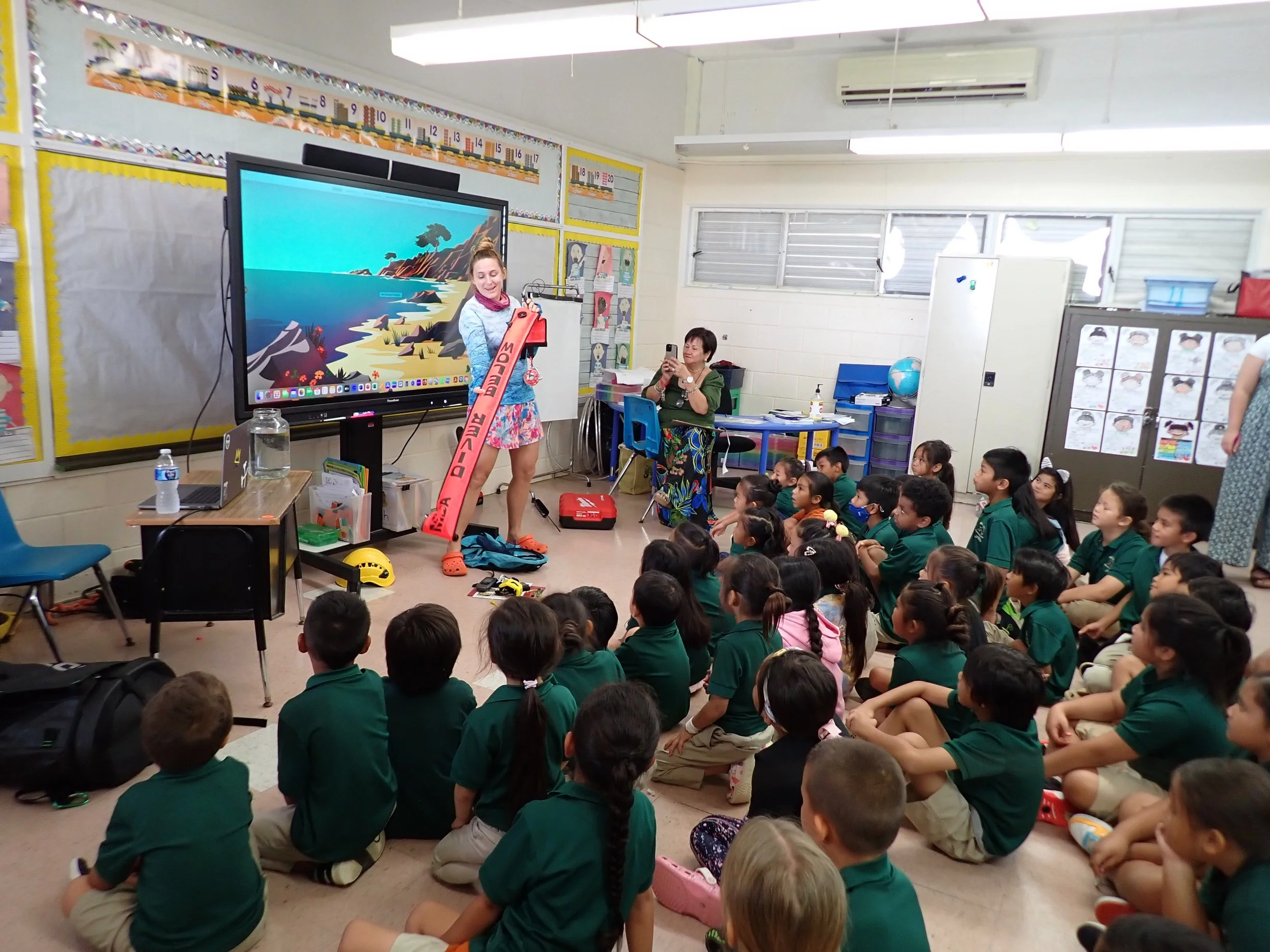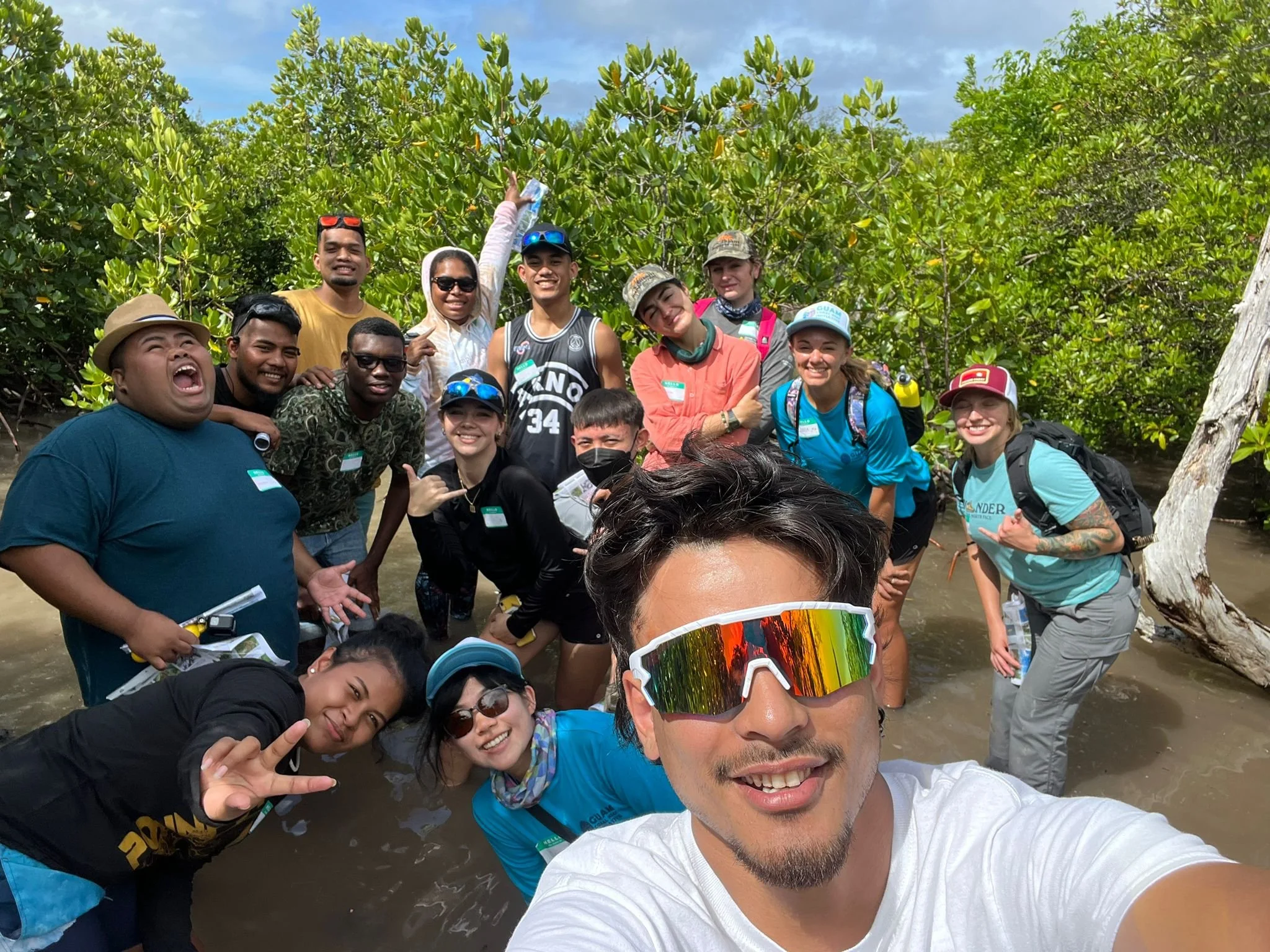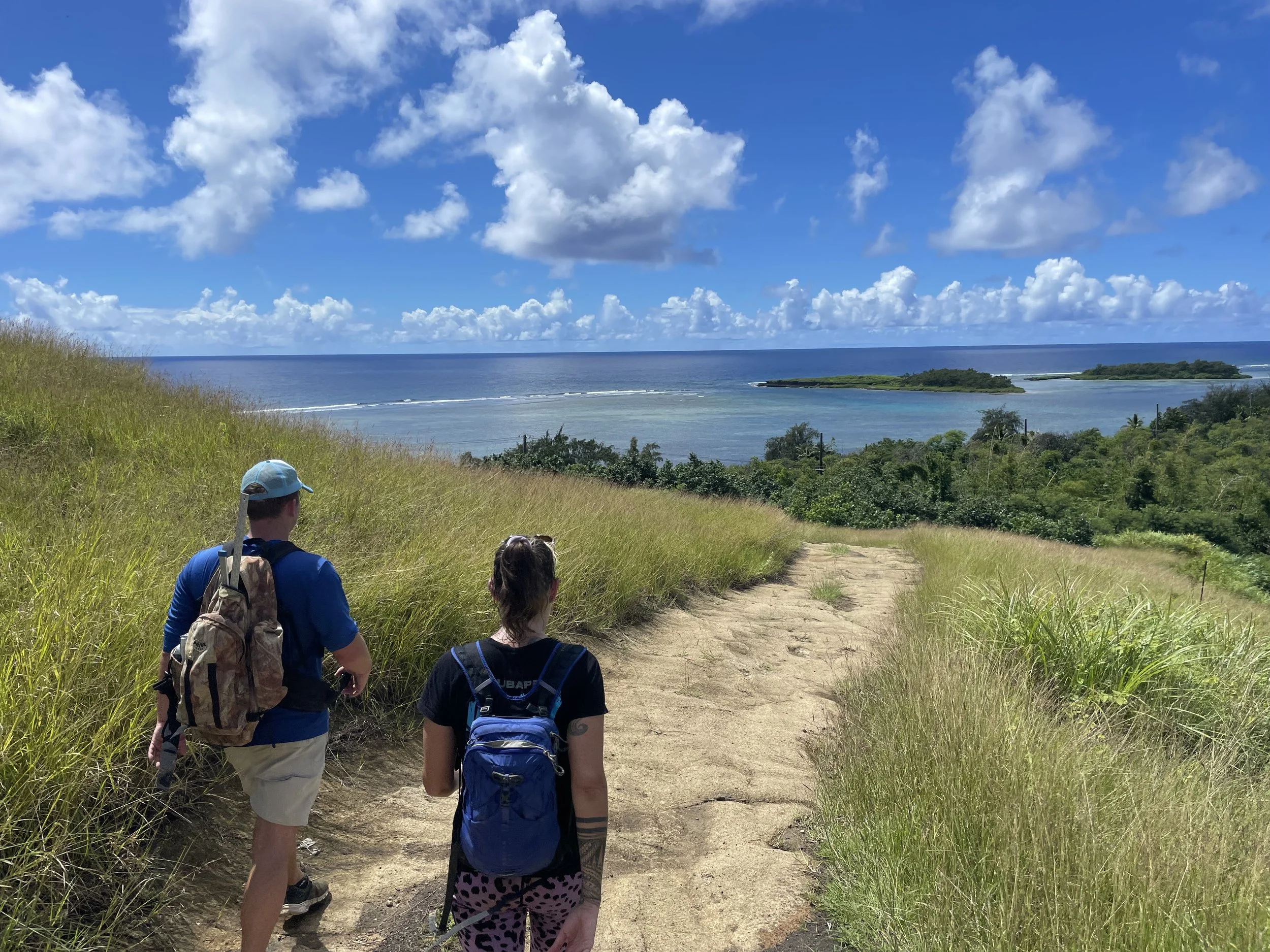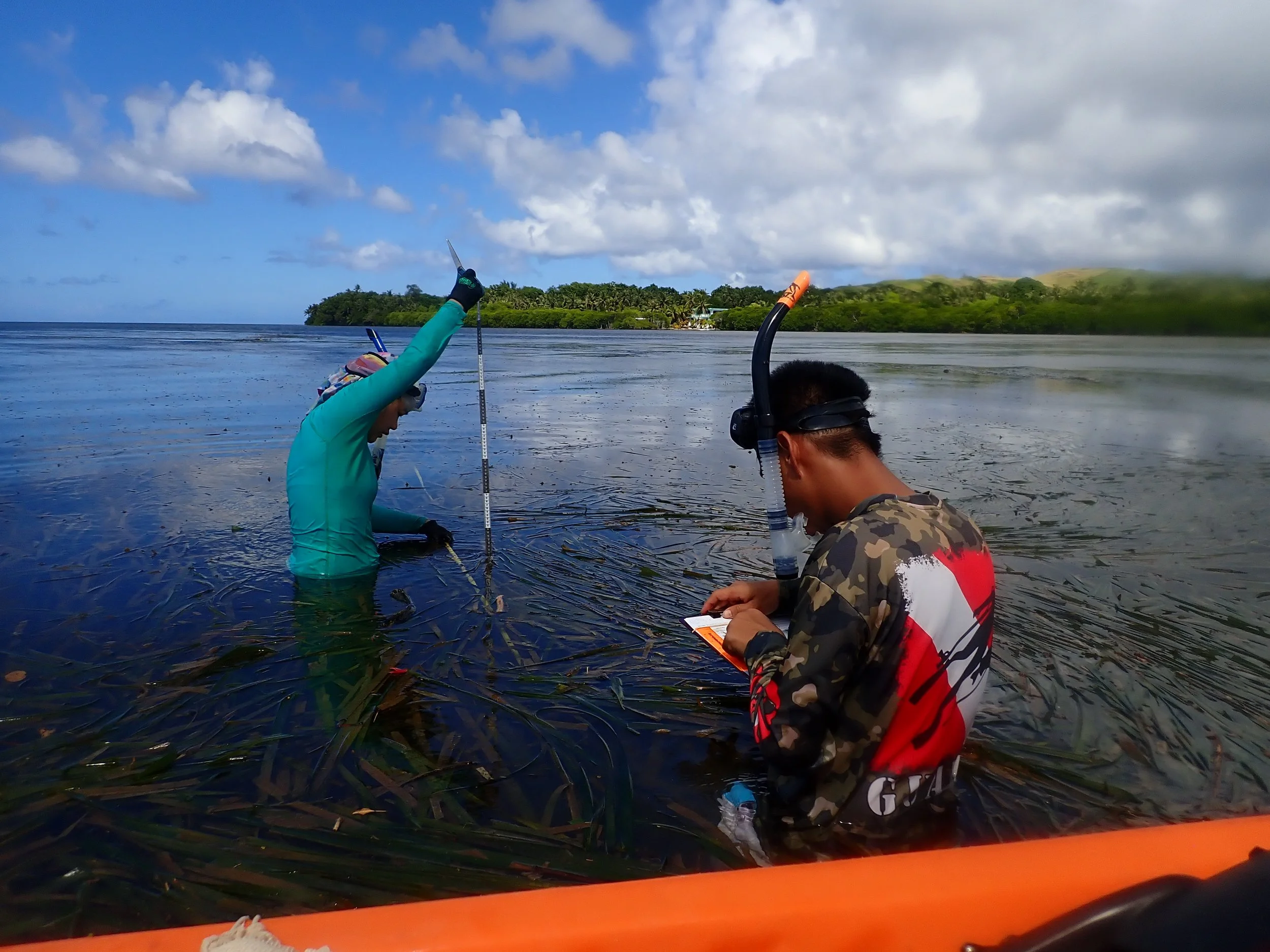
Our Work
Our work is guided by the Guam Coral Reef Resiliency Strategy, which was developed in 2018 with input from our local and national partnering organizations.
The strategy focuses on 5 main goals:
1. Effective fisheries management
2. Decreased land-based sources of pollution
3. Increased reef response and restoration
4. Sustainable recreational use and tourism
5. Human community resilience and climate change adaptation
The Guam Coral Reef Initiative team seeks to use many different approaches to address threats to Guam’s coral reefs. We regularly collaborate with other partners around the island on programs, projects, and plans, so read on to learn more!
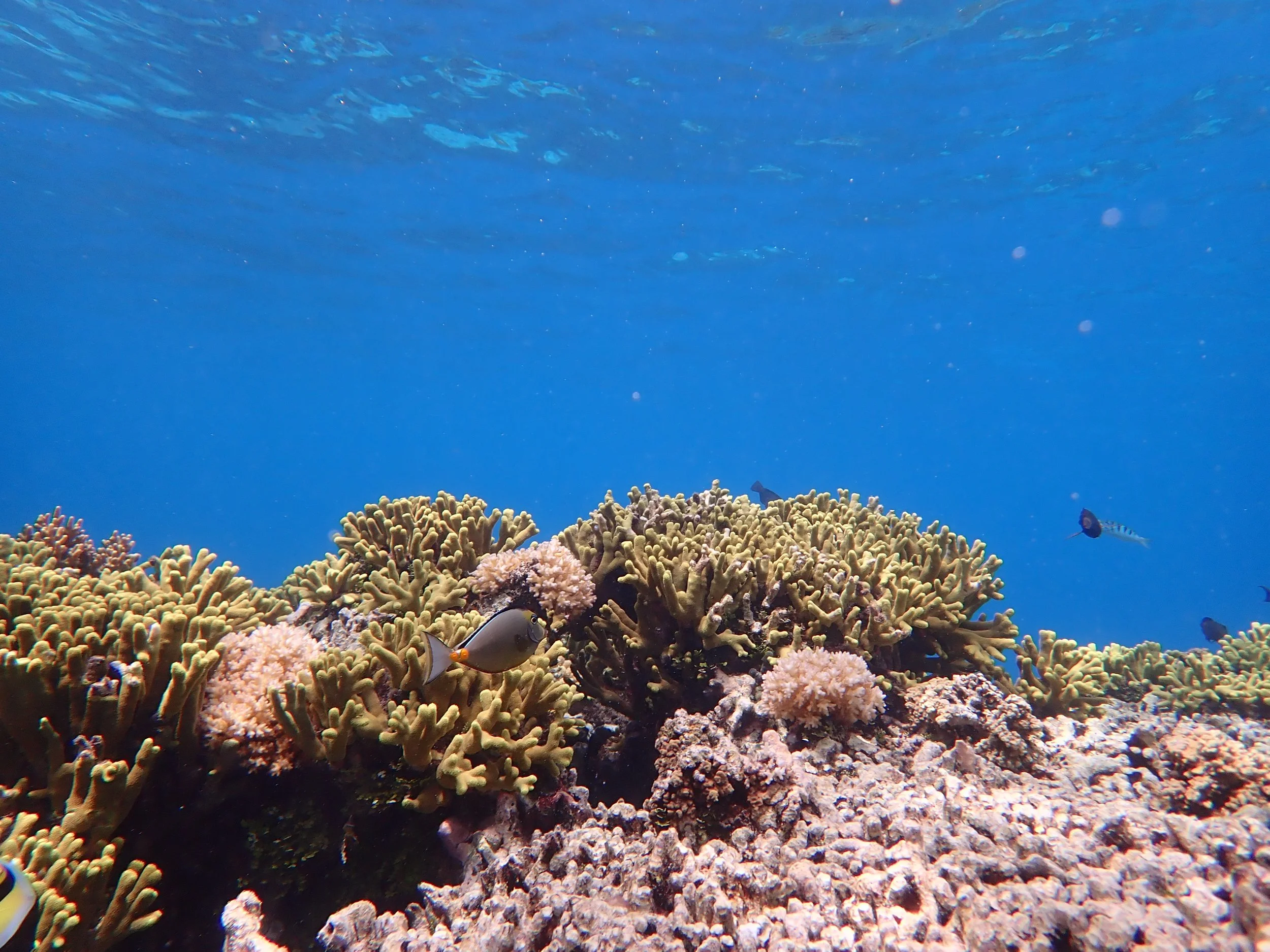
Programs
Eyes of the Reef Marianas
A training program to equip our community members with the skills and knowledge to identify and report coral reef threats
-
Eyes of the Reef Marianas is a program that trains community members on identifying impacts on coral reefs and techniques for reporting impacts to coral managers. The program covers topics such as coral bleaching, coral disease, marine debris, crown-of-thorns starfish, and nuisance species. Training materials are online, and in person training events are open to the public.
Update: The Eyes of the Reef training program and website are currently being revamped, but follow our Facebook page for updates on upcoming training dates!
In the numbers
Launched in 2018
5 in-person training sessions held to date
Watershed Restoration
Join us outdoors in working with DOAG forestry to plant trees that will restore upland areas and reduce impacts to coral reefs downstream
-
Pollution, stormwater, and sediments flow from the land onto adjacent coral reefs. These inputs can smother corals, cause harmful algal blooms, and result in coral disease outbreaks. Guam’s natural resource managers, students, and community members are working together to actively restore Guam’s watersheds to decrease the amount of pollution and sediments reaching our reefs. Watershed restoration increases the amount of vegetation on Guam’s land by replanting slopes and reducing the impacts of wildland fires and offroading. By planting trees and other native plants, we can prevent erosion; the roots of plants will hold the soil in place and reduce sediment runoff onto the reefs when it rains.
Watershed restoration is occurring in Malesso, Merizo, As Gadao, Masso Reservoir, and other sites around Guam. The work is spearheaded by the Guam Department of Agriculture Forestry and Soil Resources Division and is supported by NOAA, the Guam Coral Reef Initiative, the Bureau of Statistics and Plans, and other natural resource managers.
Community members are invited to attend plantings, so keep an eye on our Facebook page for upcoming opportunities!
Firebreak Maintenance
Photo by Guam DoAg Forestry
Sign up to join our community firebreak maintenance team
-
Fires cause enormous damage to the people, structures, and ecosystems of Guam. While it may seem like their impacts are only limited to the land, they can affect coral reefs as well. The vegetation that normally stabilizes the hillside is cleared away by fires, making it much easier for the rain to carry sediment runoff into the ocean where it can smother corals and introduce harmful new chemicals. Fires can also decimate watershed restoration efforts that are aimed at protecting reefs from erosion and runoff.
To combat this issue, GCRI partners with the Department of Agriculture Forestry division to get the community involved with maintaining firebreaks. This program was restarted in January of 2023 and recruits locals to help with firebreak maintenance for 2-week stints with a stipend of $15/hour.
Click the button below to see the flyer with more details and contact information!
In the numbers
30+ participants to date
120 square acres of firebreak area cleared
Launched 2016
Guardians of the Reef
Empowering the next generation to care for Guam’s coral reefs
-
The Guardians of the Reef Program is a collaboration between the Bureau of Statistics and Plans and the Guam Department of Education intended to mentor and educate the next generation of conservation leaders.
The program trains high school students to conduct presentations to third-grade students in a classroom setting about coral reefs, their importance to our island, the threats they face, and actions they can take to help preserve these valuable resources.
GCRI currently assists with funding and coordination for Guardians of the Reef, but the students and teachers are truly the lifeblood of this program!
In the numbers
7 high schools involved (6 public and 1 private)
26 elementary schools served
Launched in 2007
Guam Coral Reef Response Team
Preparing local reef managers to respond to immediate threats and deliver coral reef first aid
-
The Guam Coral Reef Response Team responds to acute impacts on Guam's coral reef ecosystems, including coral bleaching events, outbreaks of nuisance and invasive species, vessel groundings and chemical spills, and coral disease outbreaks. The Response Team includes representatives from local and federal government agencies and the University of Guam. GCRI coordinates and participates in this team.
In recent years, the Response Team has been busy collecting data on coral bleaching, which impacted Guam's reefs in 2013, 2014, 2016, and 2017. This effort is important as it allows local researchers and coral reef managers to better understand which of Guam's reefs may be most resilient to the impacts of climate change.
The Response Team is also conducting removal efforts for the crown-of-thorns sea star (known as COTS), which eats coral; one COTS can eat up to 100 square feet of live coral per year! Additionally, Response Team members track and remove invasive algae, remove marine debris (such as fishing nets) when necessary, and restore coral reefs that are damaged by vessel groundings and other physical impacts.
Guam Reef Restoration and Intervention Partnership (GRRIP)
Photo by Ashley Castro
Sharing local knowledge and resources to better serve Guam’s coral reefs
-
Sharing local knowledge and resources to better serve Guam’s coral reefs
The Guam Reef Restoration and Intervention Partnership (GRRIP) is a local team of scientists, managers, volunteers, and other concerned citizens conducting restoration on Guam.
GRRIP uses various coral cultivation techniques to grow corals quickly and securely in coral nurseries before they can reach a stable size and be outplanted to degraded reefs around Guam. The GCRI participates in restoration activities led by this group.
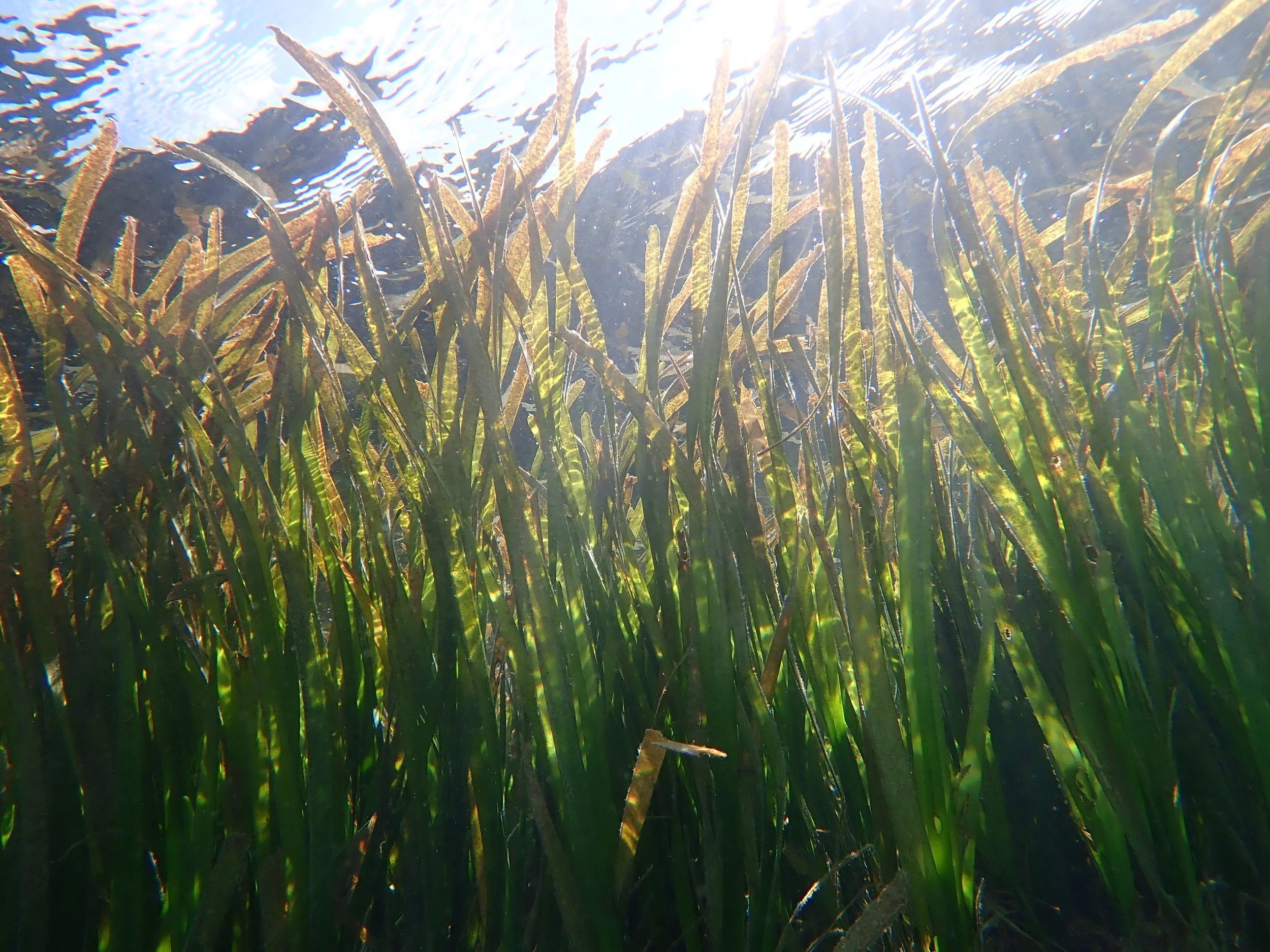
Projects
At GCRI, we are always working on various projects and producing new resources to help educate the community on the importance of Guam’s coral reefs. Explore some of our current and completed projects below.

Plans
-

Guam Coral Bleaching Response Plan
This plan was developed in 2017 by GCRI in partnership with the UOG Marine Laboratory and several other agencies to maximize the effectiveness of the Guam Coral Reef Response Team and create a plan for responding to bleaching events.
-

Guam Crown-of-Thorns Outbreak Response Plan
This plan was developed in 2017 by GCRI in collaboration with local and federal partners to appropriately address outbreaks of a local nuisance species, the Crown-of-Thorns Sea Star (COTS).
-

Guam Coral Reef Resilience Strategy
This strategy was developed in 2018 by GCRI in collaboration with other partners to enhance the resilience of Guam’s coral reef ecosystems and human communities to the impacts of climate change by 2025. This plan was updated in 2019.
-

(In-Progress) Guam Coral Reef Restoration Action Plan
GCRI is in the process of writing a long-term plan for restoring local reefs. This action plan focuses on 3 goals: restoring reef community structure and function, restoring reef fish habitat to support fisheries, and recovering rare and ecologically-important coral species.
Check out what we’ve been up to lately!
Past Programs and Projects
-
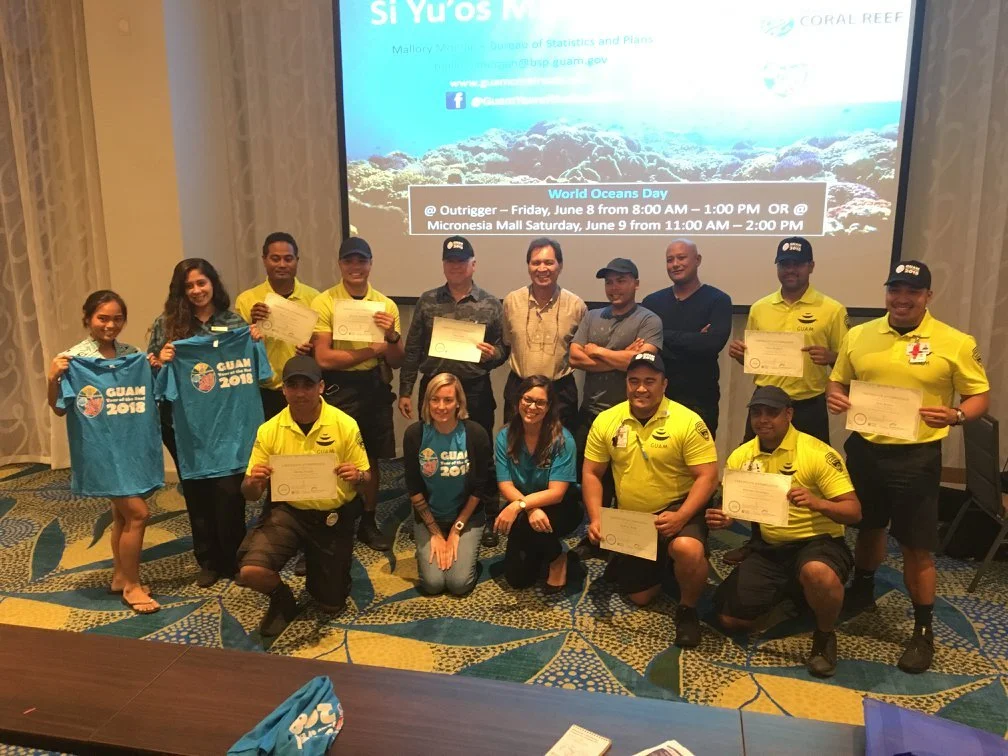
Hotels FOR Guam
Hotels FOR Guam was a partnership between BSP, NOAA, FOR Guam, and GHRA piloting seven hotels in Tumon Bay to reduce the impacts of tourism and recreational use on Guam’s coral reefs. The program cultivated environmental champions within the tourism industry who educated hotel staff on coral reef ecology, impact reporting, and safe and sustainable tourism. The program raised awareness and stewardship of coral reefs to Guam’s visitors by integrating coral reef outreach across various departments and marketing materials. This program was put on hold during the COVID-19 pandemic.
-

Guam Year of the Reef 2018
The third Guam Year of the Reef was Proclaimed by Lt. Governor Ray Tenorio by Resolution No 337-34 on February 2, 2018, to recognize the economic, biological, social, and cultural value of Guam’s coral reefs.
Guam Year of the Reef (GYOR) is a localized effort of the International Year of the Reef, which only occurs every ten years. Throughout 2018, GCRI highlighted Guam’s coral reef resources through social media, community events, newsletters, and new partnerships. Through the effort, GCRI developed new banners and outreach materials, and hosted a GYOR exhibit at the Guam Museum. GYOR2018 was a huge success with over 30 community events, a network of 22 partners, over 1,400 coral pledges by community members and visitors, and 300 Facebook followers.
-
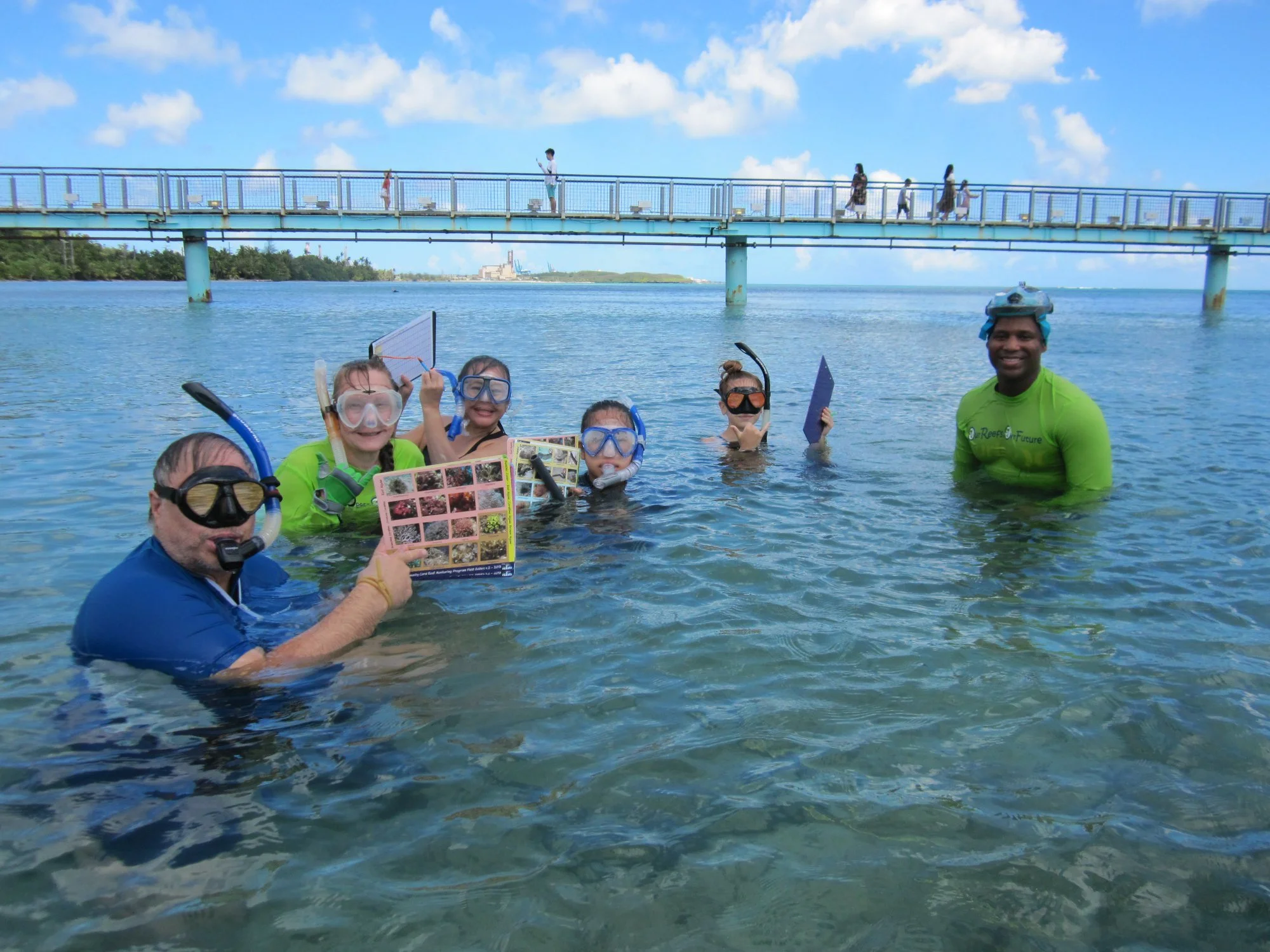
Community Coral Monitoring with FOR Guam
Friends of Reefs (FOR) Guam, formerly the Guam Community Coral Reef Monitoring Program, was a community program that supported stewardship of our island’s marine environment by Guam residents. Launched in 2012, FOR Guam started as a citizen science program to train residents to help monitor different reef flat areas in Guam. FOR Guam is currently being revamped and turned into a new program with a fisheries emphasis under the Department of Agriculture Division of Aquatic and Wildlife Resources (DAWR).
Photo by the Guam Community Coral Monitoring Program
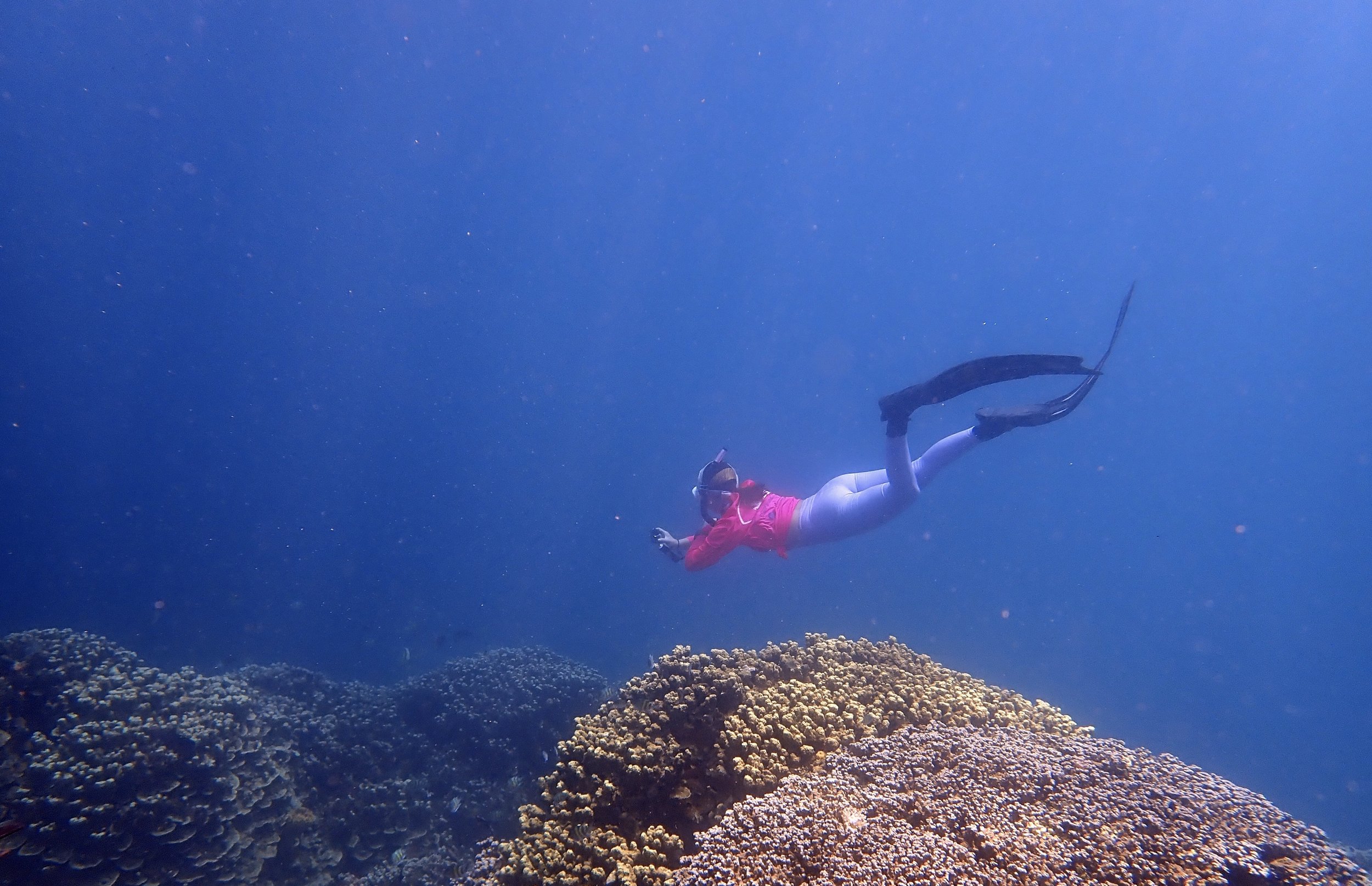
“We need to respect the oceans and take care of them as if our lives depended on it. Because they do.”
— Sylvia Earle
